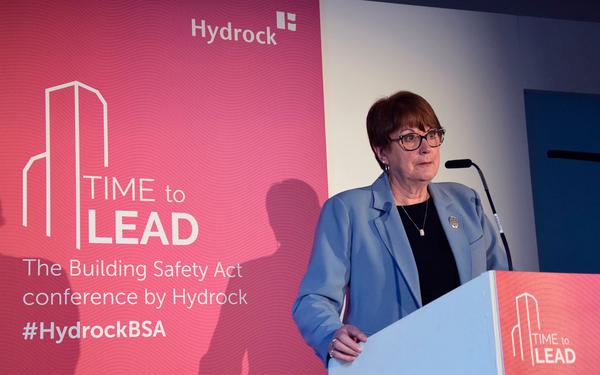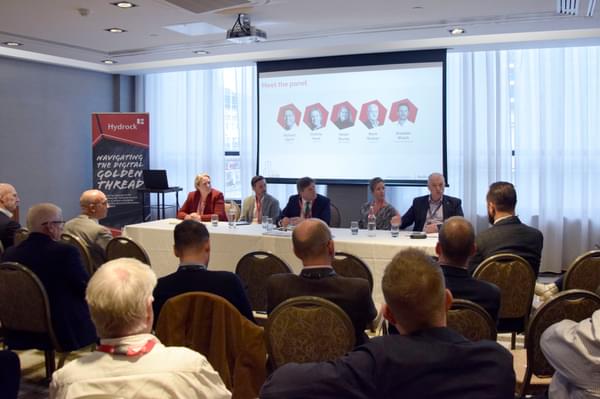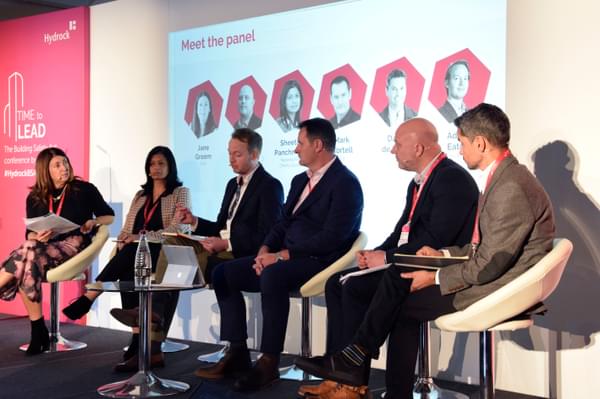
Author: Jordan Lee
Key influencers from across the built environment sector joined our breakfast roundtable in Birmingham on 20 February 2024 to explore how the Building Safety Act is being embraced.
These were the top five take-aways:
1. Is the industry ready for the BSA - it's a mixed view
Professional design teams and larger contractors are up-to-speed. However, a huge swathe of the industry don't understand the requirements or have the processes to cope.
This 'swathe' represents the smaller contractors and supply chain. There is concern that this cohort won't be able to prove their competency.
Additionally, there is grave concern that the Building Safety Regulator won't be able to cope with the volume of work, and that everyone is failing to recognise that the Act demands more than just a focus on high risk/rise buildings. Raising awareness of this, is important.
2. The dynamics of doing more design work upfront
There was complete agreement that the dynamics of the Gateways and the Act means that much more detailed design work is required up-front in the RIBA stages.
Debate included whether RIBA, as an industry body, need to recognise this change, and adjust what is stipulated under each RIBA work stage. The requirements for RIBA Stage 3 are arguably too light for Gateway 2. This could result in contractors refusing to take on schemes as they will conclude that potential risks haven't been resolved.
The requirement to produce more detailed design work earlier in the process will help improve the quality of schemes that come forward and will stop the 'rush to site' and the constant changes that then ensue and cause chaos. So, this is a positive change for the industry.
3. Who is the Principal Designer?
Amidst some confusion, there's consensus. The Principal Designer is a separate role.
It's a full-time role that demands a price - a fee - of its own within the pricing structure of the design team.
The architectural community feel that RIBA have been slow to offer guidance on the dynamics of the role. Some architects have taken it upon themselves to scope the services for this role.
While this role could be an "architect, engineer or surveyor in control of the design work"[1], it's widely presumed that it will be taken by the architect. Some Tier 1 contractors, however, remain to be convinced that architects want to play the role.
Contractors also feel that the competency required from the role levels up the playing field and means through the supply chain, poor practice is less likely to be accommodated.
There is concern that the Principal Designer must be independent so that perceived bias from the scheme's own-architect is eliminated.
4. Plan, plan and plan
Expect and plan for delays. If you plan for this scenario, your scheme will remain viable.
Developers acknowledge that they will need to invest more in upfront design delivered to a higher level of detail, with their full design team around the table.
Developers also recognise they need to plan for the time taken to complete this more detailed work, and then for the inevitable delays that will occur while waiting for approval from the Building Safety Regulator.
Additionally, if you don't invest time in planning what will be required for Gateway 2, you won't pass Gateway 3 either. So, at every stage, the advice is to plan and put appropriate time in the programme, otherwise your scheme will fail.
5. Will data remain interpretable as it passes from hand to hand?
The million-dollar question.
There was broad recognition at the table that to ensure data can be easily interpreted over time, early engagement between the end user and the design and construction team is critical. This will ensure there is clarity around what is needed from the digital golden thread at handover, so information is accessible and usable.
Nevertheless, given how well-informed the table was, a range of very understandable concerns were raised - by way of example:
- Given the importance of retaining the longevity of data on occupied buildings, is it possible for this information to remain accessible in years to come given that data systems themselves change and evolve over time?
- How user friendly is the data that's being gathered? As it gets passed on to different people who assume the role of Principal Accountable Person, how accessible and interpretable is it if those people are not construction-based, or don't have the appropriate software to access the information?
- Have we considered the sheer volume of data to be stored? If every single aspect of every apartment in a high-rise residential block needs to be annotated, how manageable is this level of data?
- When the Principal Designer steps back from the process at the end of Gateway 3, is the environment established for other people to pick up the baton and record changes and maintain the information?
Ultimately, the answer to these questions is 'yes'. The Digital Golden Thread is intended to be regularly reviewed and managed as detailed in the guidance. As Dame Judith Hackitt has said, it is up to us as an industry to ensure the right people have the right information at the right time, and that means the very understandable concerns raised in our breakfast session, must be addressed by the industry as a whole.
With thanks to: Lisa Deering, Glancy Nicholls; Graham South, Tilbury Douglas Construction; James Costello, Elevate Property Group; Alexa Woodward, Cordia; Simon Lamprell, AHR; Nick Lacey, Wolverhampton Homes; Matt Rideout, Cadence; Dave Vanderson, Weedon Architects; Mike Jones, Godwin Developments.













